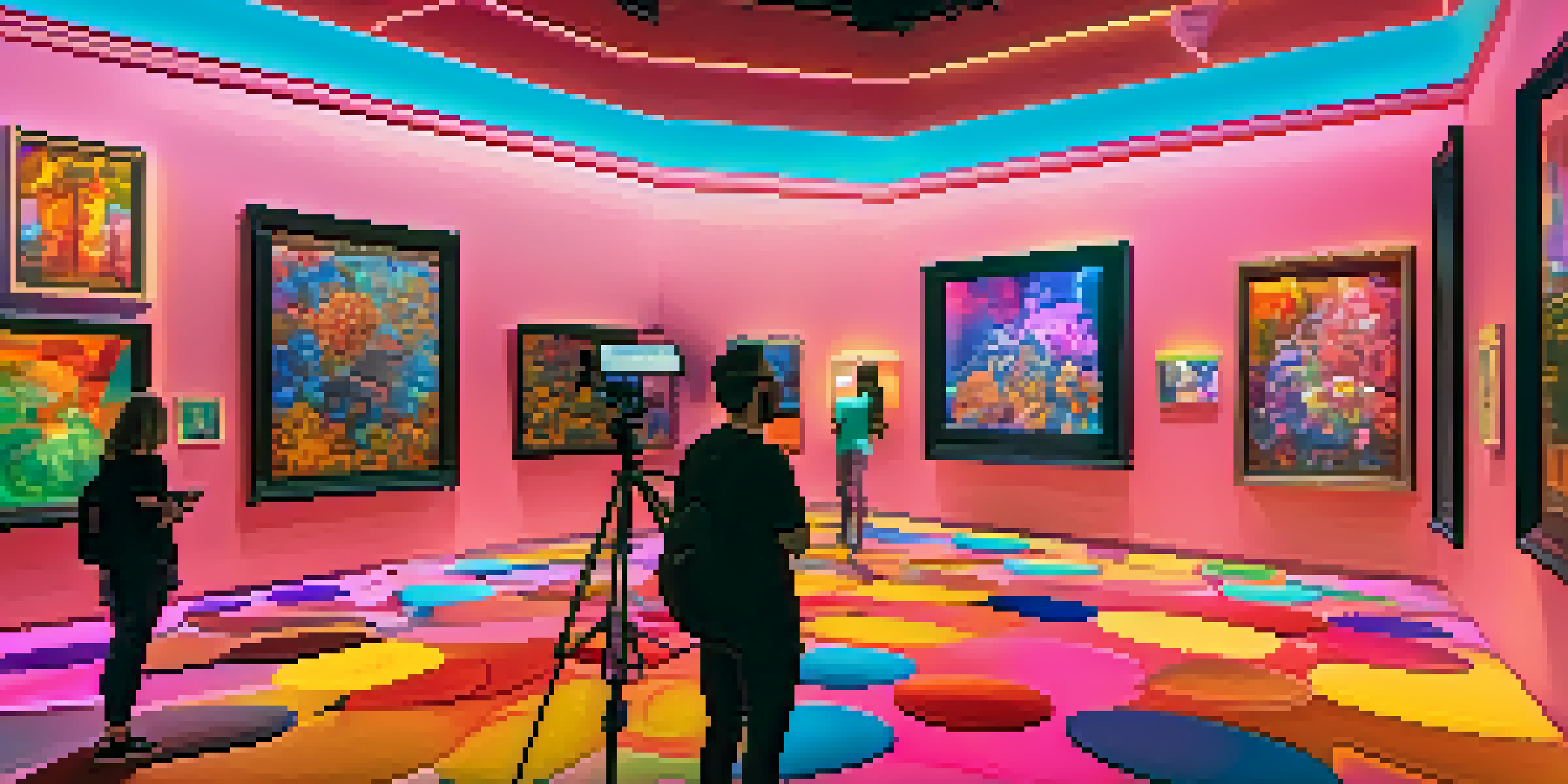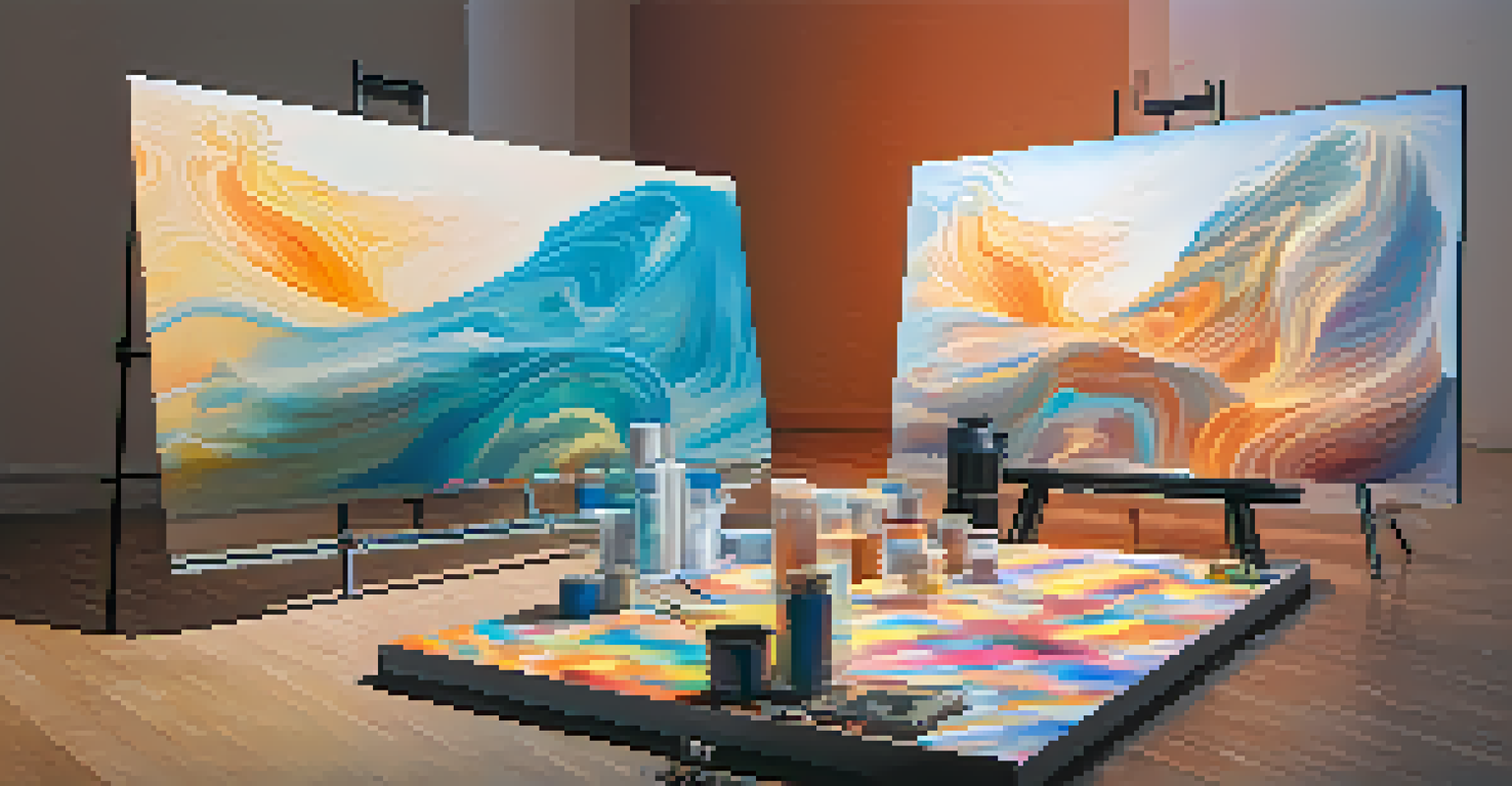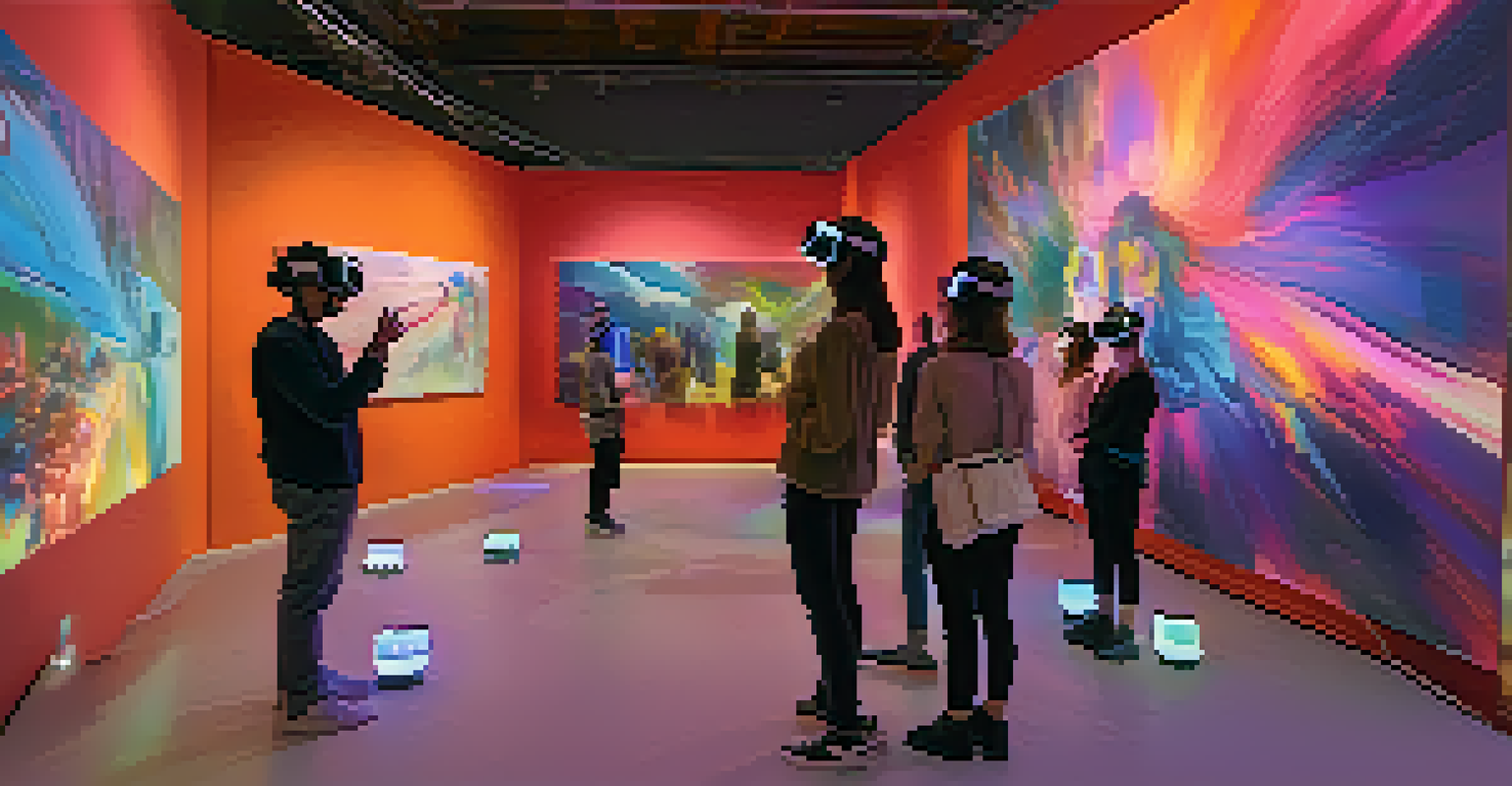Future Predictions: NFTs and the Rise of Decentralized Art

Understanding NFTs: The New Digital Collectibles
Non-fungible tokens, or NFTs, represent unique digital assets that are verified using blockchain technology. Unlike cryptocurrencies such as Bitcoin, which are interchangeable, NFTs hold distinct value, making them particularly appealing in the world of art and collectibles. Imagine owning a one-of-a-kind piece of art that’s not just a digital file but a verified token that proves ownership—this is where NFTs shine.
The future of art is not just in the gallery, but in the digital realm where creativity meets technology.
The appeal of NFTs has attracted artists, musicians, and creators looking to monetize their work in innovative ways. For example, an artist can sell a digital painting as an NFT, allowing the buyer to own the original piece while still sharing it online. This shift not only benefits the creators but also provides collectors with something truly exclusive, adding value to their investment.
As we dive deeper into the world of NFTs, it’s essential to recognize their potential to reshape how we think about ownership in the digital realm. The traditional art market has always been exclusive and often inaccessible to many, but NFTs lower the barriers of entry, allowing more people to participate in collecting and investing in art.
Decentralization: Empowering Artists and Collectors
Decentralization, at its core, refers to distributing control away from a central authority. In the art world, this means that artists can directly reach their audience without needing intermediaries like galleries or auction houses. Imagine being able to sell your artwork directly to art lovers around the globe—this is the exciting reality that decentralized platforms offer.

With the rise of decentralized art platforms, artists now have the opportunity to control their pricing and royalties. For instance, smart contracts can ensure that artists receive a percentage of future sales whenever their NFT changes hands, creating an ongoing revenue stream. This not only incentivizes creators but also enhances the value of art as an investment.
NFTs Redefine Digital Ownership
Non-fungible tokens (NFTs) enable unique digital assets to be owned and verified, transforming the landscape of art and collectibles.
Moreover, decentralized platforms democratize access to art, allowing anyone with an internet connection to buy, sell, or trade art. This shift creates a more inclusive environment where diverse voices and styles can flourish, transforming the landscape of the art community.
The Role of Blockchain in Art Ownership
Blockchain technology serves as the backbone of NFTs, ensuring each token’s authenticity and ownership. Think of blockchain as a digital ledger that records every transaction transparently and securely. This technology eliminates the risk of forgery or duplication, making it an ideal solution for artists and collectors alike.
Art is the most beautiful of all lies; it is a way of seeing the world through a different lens.
For artists, blockchain provides a permanent record of their work and its provenance, which is essential for establishing value. Buyers can trace back the history of an NFT, confirming its uniqueness and legitimacy. This assurance is crucial in a market where authenticity can significantly affect an artwork's price.
Furthermore, the decentralized nature of blockchain means that no single entity controls the information, reducing the risk of censorship or manipulation. This empowers artists to share their work freely, knowing that their rights and ownership are protected, fostering a more vibrant creative ecosystem.
Challenges Facing NFTs and Decentralized Art
Despite the excitement surrounding NFTs, there are several challenges that artists and collectors must navigate. One significant concern is the environmental impact of blockchain technology, particularly proof-of-work systems that require substantial energy. As awareness grows, many are advocating for more sustainable solutions to reduce carbon footprints.
Another challenge involves the volatility of the NFT market, which can lead to significant price fluctuations. While some NFTs sell for millions, others may struggle to find buyers, leaving collectors at risk. This unpredictability can deter potential artists and investors from fully engaging with the market, despite its potential.
Decentralization Empowers Creators
Decentralized platforms allow artists to sell their work directly, reclaiming control over pricing and royalties without intermediaries.
Lastly, the lack of regulation in the NFT space poses risks regarding copyright infringement and ownership disputes. As the industry matures, establishing clear guidelines will be essential to protect artists, buyers, and the integrity of the art market.
The Future of Art: Blending Digital and Traditional
As we look ahead, the lines between digital and traditional art continue to blur. Artists are increasingly experimenting with hybrid forms, integrating physical art with digital elements, and offering NFTs as part of their packages. Picture receiving a physical painting accompanied by an NFT that certifies its authenticity and provides added digital content—this is the future of art.
Additionally, as virtual reality (VR) and augmented reality (AR) technologies evolve, they will likely play a significant role in how we experience art. Imagine walking through a virtual gallery where you can interact with digital art pieces, and purchase NFTs directly from the exhibition. This immersive experience could revolutionize how we appreciate and acquire art.
The convergence of technology and creativity opens up endless possibilities for artists and collectors alike. As more people embrace digital art and NFTs, we can expect to see an even broader acceptance of these innovations within the traditional art community, fostering a richer cultural landscape.
The Impact of Social Media on NFTs and Art
Social media has been a driving force behind the rapid popularity of NFTs, providing artists with platforms to showcase their work and connect with potential buyers. Platforms like Twitter and Instagram allow artists to share their creations instantly, gaining visibility and building a following. Think of it as a digital gallery where anyone can see and appreciate art from around the world.
Moreover, social media enables real-time engagement, allowing artists to interact directly with their audience. This connection fosters a sense of community and encourages collaboration, which can lead to exciting new projects and ideas. For example, many artists are joining forces to create unique NFT collections, combining their styles and attracting a broader audience.
Social Media Boosts NFT Visibility
Social media serves as a vital tool for artists to showcase their NFTs, connect with audiences, and foster community engagement.
As social media continues to evolve, it will likely play an even more significant role in shaping the future of NFTs and decentralized art. Artists who effectively leverage these platforms can elevate their visibility and increase their chances of success in this dynamic market.
The Road Ahead: Innovating the Art World
Looking forward, the art world is on the brink of a significant transformation thanks to NFTs and decentralized platforms. Artists and collectors alike are beginning to explore new concepts of ownership, value, and creativity. As these innovations continue to develop, we will witness a more inclusive and diverse art landscape that celebrates various forms of expression.
The ongoing experimentation with NFTs invites not only artists but also technologists, marketers, and visionaries to reimagine the future of art. This collaborative spirit can lead to groundbreaking ideas that push the boundaries of what art can be. For example, interactive NFTs that evolve based on audience engagement could become a new genre altogether.

Ultimately, the future of art hinges on embracing change and innovation. By harnessing the power of technology while honoring the creative spirit, we can create an art world that is not only more accessible but also richer and more vibrant for generations to come.